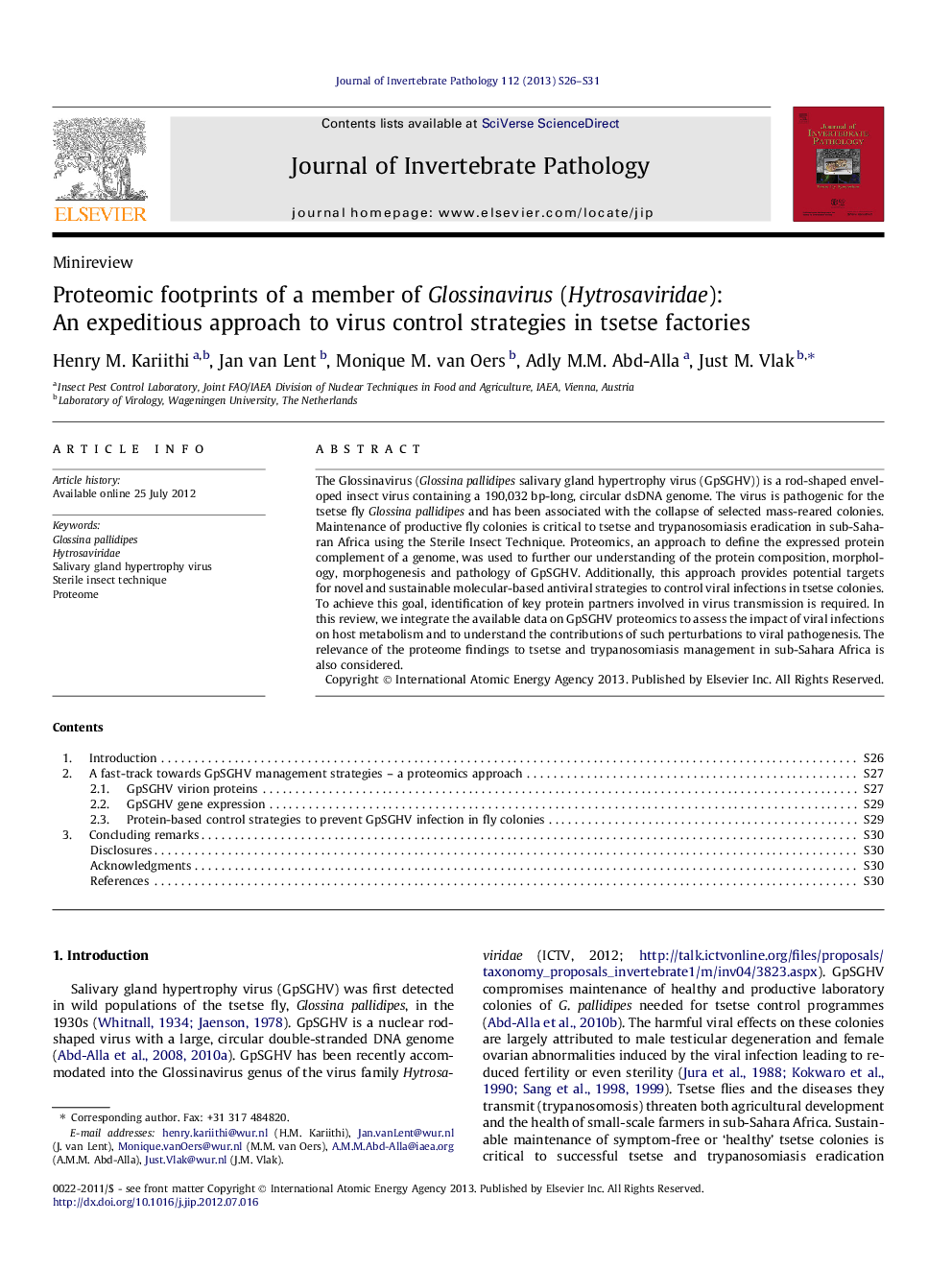| Article ID | Journal | Published Year | Pages | File Type |
|---|---|---|---|---|
| 6389603 | Journal of Invertebrate Pathology | 2013 | 6 Pages |
The Glossinavirus (Glossina pallidipes salivary gland hypertrophy virus (GpSGHV)) is a rod-shaped enveloped insect virus containing a 190,032Â bp-long, circular dsDNA genome. The virus is pathogenic for the tsetse fly Glossina pallidipes and has been associated with the collapse of selected mass-reared colonies. Maintenance of productive fly colonies is critical to tsetse and trypanosomiasis eradication in sub-Saharan Africa using the Sterile Insect Technique. Proteomics, an approach to define the expressed protein complement of a genome, was used to further our understanding of the protein composition, morphology, morphogenesis and pathology of GpSGHV. Additionally, this approach provides potential targets for novel and sustainable molecular-based antiviral strategies to control viral infections in tsetse colonies. To achieve this goal, identification of key protein partners involved in virus transmission is required. In this review, we integrate the available data on GpSGHV proteomics to assess the impact of viral infections on host metabolism and to understand the contributions of such perturbations to viral pathogenesis. The relevance of the proteome findings to tsetse and trypanosomiasis management in sub-Sahara Africa is also considered.
Graphical abstractDownload full-size imageHighlights⺠Purification of GpSGHV with Ficoll yields virions with higher structural integrity. ⺠The proteome of GpSGHV virions contains 61 proteins encoded by Glossinavirus ORFs. ⺠GpSGHV virions contain numerous host proteins reflecting its assembly path. ⺠GpSGHV alters the protein expression pattern in the host tsetse Glossina pallidipes.
